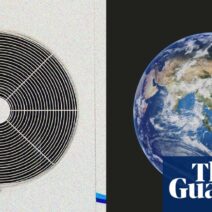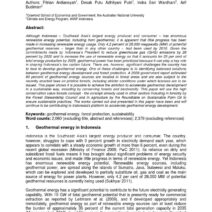Climate change and global warming are terms often used interchangeably, but they encapsulate distinct phenomena that have critical implications for the future of our planet. Understanding the nuances between these two concepts is imperative for engaging in informed discussions about environmental policy, societal impact, and individual responsibility. This exploration promises a shift in perspective, urging readers to confront misconceptions that cloud a comprehensive understanding of our world’s evolving climate.
Defining Climate Change
At its core, climate change refers to significant alterations in temperature, precipitation patterns, and other atmospheric conditions over an extended period. While the Earth’s climate has always been subject to natural variability, the term currently implicates anthropogenic influences—those resulting from human activities. Deforestation, fossil fuel combustion, and agricultural practices contribute to the intricate web of factors driving climate shifts. These changes manifest in diverse forms: rising sea levels, altered weather patterns, and increased frequency of extreme weather events such as hurricanes and droughts.
Understanding Global Warming
Global warming specifically pertains to the observed increase in average global temperatures, primarily attributed to the greenhouse effect. This phenomenon occurs when greenhouse gases, such as carbon dioxide (CO2) and methane (CH4), accumulate in the atmosphere, trapping heat from the sun. The overwhelming dependence on fossil fuels for energy and transportation has exacerbated this scenario, with the Intergovernmental Panel on Climate Change (IPCC) affirming that human activities are the predominant cause of global temperature rise since the mid-20th century.
Interconnected, Yet Distinct
While climate change encompasses a broader array of environmental shifts, global warming is a pivotal component of this phenomenon. Consider climate change as the overarching narrative—a tale woven through fluctuating climatic norms and evolving ecosystems. Global warming, then, is the clarion call within that narrative, marking the urgency of rising temperatures. It is crucial to differentiate these terms, as conflating them can lead to oversimplifications that undermine the scientific depth of climate studies.
The Myths and Misinformation
Delving into the intersection of climate change and global warming reveals a cacophony of misunderstandings propagated through various platforms. One prevalent myth is the notion that a singular cold winter disproves the existence of global warming. Such arguments betray a fundamental misunderstanding of climate science. Weather denotes short-term atmospheric conditions, while climate embodies long-term trends. As such, fluctuations in seasonal temperatures do not invalidate the overarching trajectory of warming trends.
Further complicating this discourse is the myth that climate change is only concerning temperature rises at the surface level. In truth, climate change encompasses a multifaceted array of indicators including ocean acidification, glacial retreat, and biodiversity loss. Each of these metrics provides critical insight into the health of our planet, reinforcing the urgent need for comprehensive understanding and action.
The Consequences of Inaction
The ramifications of disregarding the complexities inherent in climate change and global warming are profound. As temperature rises and weather patterns destabilize, ecosystems face unprecedented stressors. Biodiversity loss accelerates, threatening species extinction and disrupting food webs. Communities, particularly those in vulnerable regions, grapple with the compounded threats of natural disasters, which can lead to displacement and human rights crises. The economic implications are equally staggering, with estimates suggesting that climate-related disasters could result in trillions of dollars in damages globally.
Shifting Perspectives
Recognizing the distinction between climate change and global warming invites a critical reassessment of our collective responsibility toward the environment. Embracing this knowledge creates an opportunity for advocacy and informed decision-making at all levels of society—from policymakers to individuals. A shift in perspective can mobilize grassroots movements demanding sustainable practices, renewable energy investment, and stringent regulations on emissions. Aligned efforts may catalyze significant reductions in carbon footprints, leading to tangible changes in community resilience against the impacts of climate change.
Hope in Action
Though daunting, the challenges posed by climate change and global warming also present opportunities for innovation and growth. Technological advancements in renewable energy—solar, wind, and hydro—have reached unprecedented levels of efficiency and affordability. Transitioning to a low-carbon economy offers not only a path to mitigating climate impacts but also the creation of green jobs and promoting sustainable development.
Community engagement is essential for stimulating environmental awareness and fostering local solutions. Grassroots initiatives can galvanize individuals and organizations to adopt sustainable practices, thus contributing to a larger shift toward resilience in the face of climate change. Education plays a pivotal role in this endeavor, as informing the next generation about these issues empowers them to champion scientific inquiry and activism.
Conclusion
In summary, while climate change and global warming are intimately linked, their distinctions are crucial for a profound understanding of the environmental challenges we face. Recognizing these complexities enables informed discourse and action, reshaping our interactions with the planet. As we navigate the realities of an uncertain climate future, embracing knowledge and fostering a shared sense of responsibility can inspire hope and illuminate pathways toward sustainability. It is, ultimately, a call to arms—an invitation to engage with the intricate tapestry of our world and ensure its preservation for generations to come.


